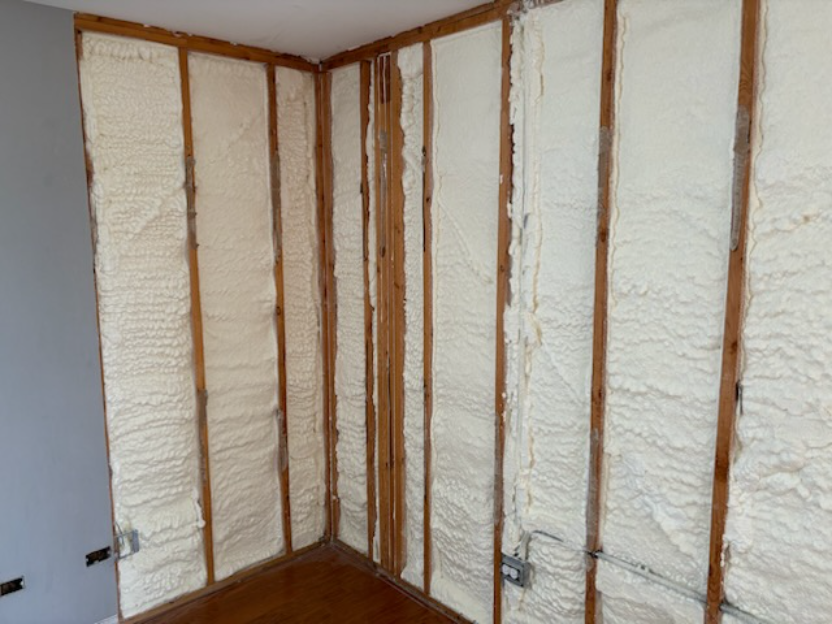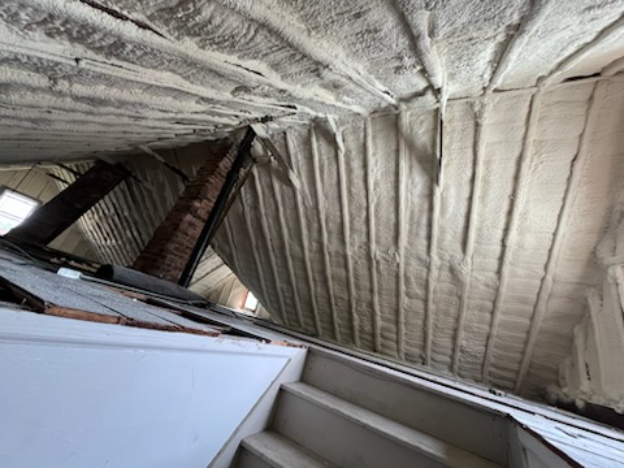
Modern spray foam insulation holds fire safety ratings that meet national standards when installed correctly, but local conditions in Carol Stream, Illinois, require attention to humidity and temperature fluctuations. These materials, including closed-cell and open-cell varieties, typically achieve Class A fire ratings under ASTM E84 testing, meaning low flame spread and smoke development. Builders and homeowners in this area benefit from understanding these ratings to comply with Illinois building codes and reduce fire risks in homes exposed to harsh winters.
This article breaks down the ratings, compares types, and covers practical factors for the region. Information draws from years of handling insulation projects in the Midwest, where fire safety directly impacts building durability and occupant protection.
Fire ratings for insulation measure how materials resist burning and limit fire spread. Spray foam, made from polyurethane, gets evaluated through tests like ASTM E84, which assesses flame spread index (FSI) and smoke developed index (SDI). A Class A rating, with FSI under 25 and SDI under 450, marks top performance for interior finishes.
This is particularly relevant in areas like Carol Stream, where DuPage County enforces the International Building Code (IBC), spray foam must pass these tests to gain approval. Closed-cell spray foam often excels here due to its density, which slows fire progression better than open-cell options.
Data from the National Fire Protection Association (NFPA) shows that proper insulation contributes to fewer residential fire incidents. In 2022, home fires caused over 350,000 cases nationwide, with building materials playing a key role in containment.
Closed-cell spray foam expands less but forms a rigid structure, earning high fire resistance. It includes blowing agents that create closed air pockets, raising its R-value and density to about 2 pounds per cubic foot. This type usually scores FSI of 5-20 in tests. During installation in Carol Stream’s variable climate, apply it in layers to avoid thermal bridging, which can affect even fire performance over time.
Open-cell foam, lighter at 0.5 pounds per cubic foot, absorbs sound but carries higher FSI around 20-50. Both need fire-retardant additives to meet codes, especially in attics or crawl spaces common in Illinois homes.
A study from the Polyisocyanurate Insulation Manufacturers Association (PIMA) highlights that closed-cell foam resists ignition longer in simulated wall assemblies.
During installation in Carol Stream’s variable climate, apply closed-cell foam in layers to avoid thermal bridging, which can affect even fire performance over time.
The table below compares key fire ratings for common spray foam types based on standard tests.
| Type | Density (lb/ft³) | FSI (ASTM E84) | SDI (ASTM E84) | Class Rating |
|---|---|---|---|---|
| Closed-Cell | 1.7-2.0 | 5-20 | 50-200 | A |
| Open-Cell | 0.4-0.8 | 20-50 | 200-450 | A or B |
| Medium-Density | 2.0-2.5 | 10-25 | 100-300 | A |
These values come from manufacturer data aligned with ICC-ES evaluations, showing closed-cell as the choice for high-risk areas.
Market facts indicate spray foam use grew 15% in the Midwest from 2018-2023, per the Spray Polyurethane Foam Alliance (SPFA), driven by energy codes that also stress fire safety.
Carol Stream faces cold snaps down to -10°F and humid summers, which test insulation integrity. Moisture can degrade foam over time, potentially worsening fire behavior if not addressed. Local codes mandate thermal barriers like drywall over exposed foam to prevent rapid fire spread.
Building on the IBC enforcement discussed earlier, Illinois adoption of the 2021 IBC requires spray foam in residential zones to include ignition barriers, a step that cuts fire risks in wood-framed homes prevalent here.
To mitigate moisture degradation, test ambient humidity before application; levels above 60% in spring can lead to uneven curing, impacting density and fire resistance.

Evaluate building age and layout first. Older homes in Carol Stream may need retrofits that account for existing electrical systems, which spark many fires.
Check contractor certification through SPFA, as improper mixing voids ratings. Budget for inspections to ensure compliance with DuPage County rules.
Consider long-term maintenance; foam’s fire performance holds if protected from pests or water damage, common in the area’s clay soils.
Weigh environmental impact—some foams use HFO blowing agents that lower global warming potential while maintaining fire standards.
Closed-cell foam has a higher upfront price, but it delivers better energy savings. By lowering electrical loads, it indirectly supports safer fire-resistant designs.
DIY applications often create uneven coverage, which weakens insulation performance and fire resistance. Professional installation ensures a consistent, reliable barrier.
Modern spray foams meet low-VOC standards, which helps minimize smoke toxicity during a fire compared to older formulations.
Pair spray foam with smoke detectors updated to 10-year models, as recommended by NFPA, to catch issues early in insulated spaces.
No, when rated Class A and covered with barriers, it actually contains flames better than loose-fill alternatives. Tests show it chars rather than melts, limiting spread.
State rules follow IBC, requiring thermal barriers over foam in habitable areas. Carol Stream adds local amendments for wind-driven fires.
Yes, with additives, but it performs slightly worse in flame spread. Use it for non-structural areas to balance cost and safety.
ASTM E84 covers surface burning, while NFPA 286 evaluates room-scale fires. Both apply to Carol Stream approvals.
Closed-cell resists moisture well, maintaining ratings. Ventilate during install to avoid trapped humidity.
Fire safety ratings position modern spray foam as a reliable option for Carol Stream homes, with closed-cell leading in performance. Focus on proper installation and code compliance to maximize benefits. Assess your home’s specific setup, climate exposure, and safety needs to choose wisely for lasting protection.
Contact South Chicago Insulation at (779) 803-8025 or email [email protected] for details on insulation options suited to your project. Discussions help clarify ratings and local requirements without commitment.